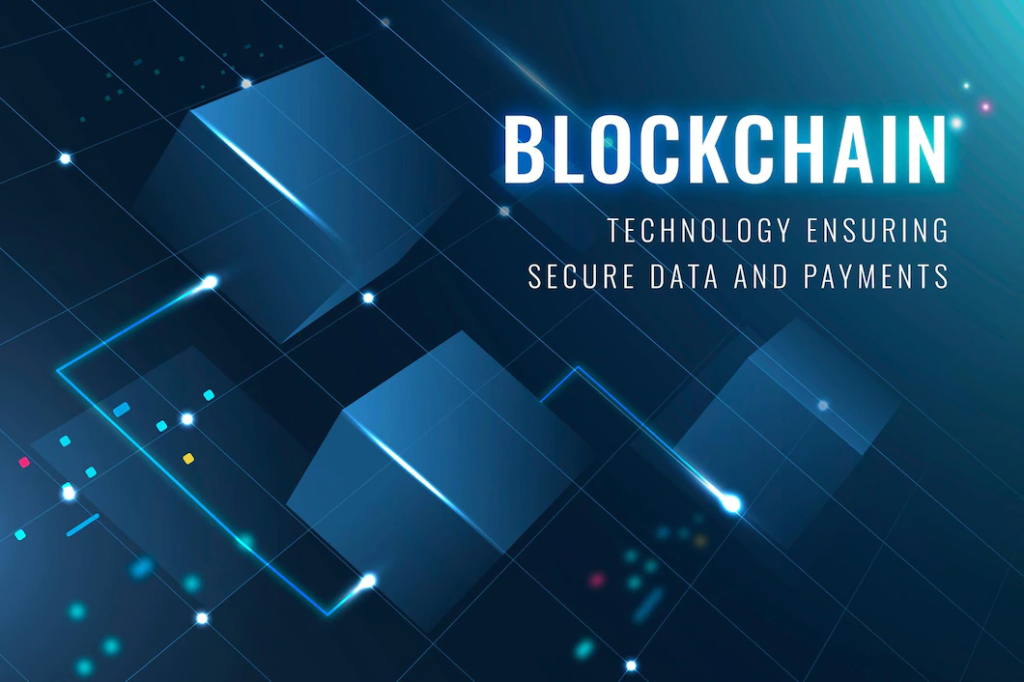How Blockchain Impacts on Mobile App Development Process
Many industries are widely accepting blockchain-enabled functions at the global level – such as: the healthcare industry, banking industry, supply chain industry and many more. It is a fact that every organization requires blockchain to make its process more efficient and profound.
Quick Links
As per the data of Statista.com, it is expected that the blockchain technology market will reach to a valuation of $ 23.3 billion by the year 2023. By the year 2025, it will reach incorporate a valuation of $ 39.7 billion.

Connecting SMEs Through Blockchain
When it comes to SMEs then blockchain incorporates the potential to help the SMEs for overcoming difficult interoperability across different systems, limited access to digital infrastructure and many more.
I think that blockchain can help developers to effectively develop applications with robust solutions. Through blockchain, it ensures the protection of sensitive data, it enhances accountability of operations and it also ensures trust among parties.
Impact of Blockchain on Mobile App Development
The decentralized architecture of the blockchain is helping developers to overcome different issues during the mobile app development process. The below article will help you to understand the different ways through which blockchain is empowering the entire mobile app development process:
1: Blockchain incorporates a distributed ledger system
- The process of blockchain works through the synchronization of data collaboration and if any changes interrupt the ledger then it showcases an adverse impact on the entire ledger.
- In such cases, the distributed ledger act as the computer server for the clients and mobile applications act as the clients for these blockchain servers. Hence, it creates a secure and centralized digital laser system for mobile app developers.
- Developers can also empower different types of blockchain-enabled operations such as: public blockchain channels, private blockchain operations, hybrid ledger and consortium blockchain-enabled settings.
- In short, there are 4 types of blockchain and it entirely depends upon the developers on how they want to build a centralized system for the digital laser system.
Within the distributed ledger systems in the blockchain application development, all the technologies incorporate immutable records of transactions. With this shared ledger, transactions are recorded only once and it also eliminated the duplication of efforts.
2: Blockchain enhances data privacy-related concerns
Fortunately, the use of blockchain brings out innovative solutions for removing all privacy concerns. For example: with the help of blockchain, if any transaction changes the value or if anyone tries to change the value of any transaction then it showcases the impact on each node of transactions. In this way, it improves improved security operations through blockchain.
- In technical terms, with the blockchain entire process works through an encryption technique. All the encryption functions are based on hash-encryption keys that can only be decoded through the crypto hash functions. Thus, it offers profound data security and privacy protection in an effective way.
- The acts of data breaching are increasing throughout the world. In such cases, developers who are responsible for handling mobile maintenance functions can take benefit from blockchain technologies to completely reduce any probability of data breaches.
Below are the top most reasons through which developers can ensure better security of operations with the help of blockchain:
- Cryptographic-enabled keys.
- It runs on a peer-to-peer network.
- It secures the transactions and records on the blockchain network.
3: Blockchain offers high-reliability
Mobile developers want to switch towards those tools which offer them robust and reliable infrastructure for app development. Currently, mobile app developers consistently face complex issues due to the system crashing. However, blockchain technology is the ultimate solution to overcome this problem.
- Blockchain brings out trust, security and transparency in the business networks due to the peer-to-peer working process. It also helps in delivering cost-saving operations with data efficiency in an effective way.
- Apart from reliable operations, blockchain also empowers companies towards the development of cost-saving operations, and increased data speed, it brings business automation and many more functionalities.
4: Uncomplicated accessibility of tools and platforms
Blockchain technology is open source thus it offers easy accessibility of tools to the developers. With the help of advanced and open-source tools, developers can use them for mobile app maintenance purposes in an effective way.
- Apart from this, there are some important blockchain-enabled networks such as: the use of Hyperledger Fabric, Stellar, Ripple, OpenChain and many more.
- I believe that if a technology is complicated then more professional support will be required to bring out valuable results. On the other hand, if a technology is not complicated then people can bring out valuable insights with the minimum effort.
In such cases, blockchain technology promotes simplicity of operations so that developers can utilize it as an upper hand over the relative models for performing identical tasks in an effective way.
I think that the use of a blockchain app development process will help companies to get rid of the higher cost of operation. It offers feature-rich mobile application services that can work on diverse API-enabled integrations.
5: Data synthesis process

Blockchain technology offers an entire data systemization for storing the data across multiple blocks to effectively improve reliable data implementation. As, the flexibility of hierarchy in the blockchain provides a well-defined layer of security to the developers that helps them to prevent potential attacks.
Data systemization also improves the reliability of the operations and it stores the data throughout multiple data sets. The process of data systemization helps the developers to maintain data security in the operations.
Although, data systemization offers a holistic approach to the development of different datasets. Blockchain mobile app development plays an important role in the development of data systemization throughout the app development cycle.
Working Mechanism of Blockchain

This mechanism will be helpful for the developers to know about the exact blockchain working cycle:
Step 1: Recording the transaction
All the transactions are recorded in the blockchain network and it forms different data blocks.
Step 2: Gaining consensus on operations
The majority of the participants (computer servers) on the networks need to provide their consent that the recorded transaction is entirely valid. Although, the rules of the agreement can be changed. However, all the rules are needed to establish at the beginning of the network development.
Step 3: Linking blocks
Once the transaction gets approved by the network then all the blocks get connected with each chain by forming a secure chain of datasets. As, each additional block strengthens the verification through previous blocks and it results in forming the entire blockchain.
Step 4: Shared ledger:
Once all the transactions are spread across the ledger then it is distributed across all the participants to improve the authenticity of transactions in an effective way. Blockchain creates one ledger with decentralized transactions in the tamper-proof.
Recommendation to Developers
The use of blockchain helps the company to make its mobile app development process easy and time-effective. From the developer’s point of view – they are fewer developers who are familiar with blockchain technology at the global level as compared to those developers who are familiar with the other coding platforms.
- Thus, I think that developers are required to brush up their skills in order to make more profound app development. For example: developers are required to gain important insights about web 3.0 skills because it will help them to create new mobile applications in an effective way.
- Not only this, developers are required to also learn about key skill sets such as: cybersecurity, data structure, smart contracts, architecture functions and many more. All these functions will help the developers to learn about the important measures that need to be taken into consideration while developing blockchain applications.
- I also conducted extensive research on the use of specific programming languages in the blockchain. As per my research, I have reached on the conclusion that the use of “Python” will help developers to work on many open-source projects.
There are the following key features of the Python programming language that can be integrated with blockchain technology – such as:
- Portability.
- Python is typed dynamically.
- It integrates programming languages.
- It can easily interpret languages.
Python programming language can effectively create contracts for NEO and smart contracts. So, developers need to effectively work towards the integration of their programming skills with blockchain technology to craft new operations.
The Final Words
It is clear that the world is moving toward the incorporation of blockchain-enabled operations. However, in reality, blockchain will still require to spend 3-4 years so that it can be utilized by direct customers instead of programmers.
From the programmer’s perspective, the use of blockchain will be going to make their operations more simplified. With blockchain platforms, developers can experience a 20% time reduction in the entire process.
To gain all these benefits, developers are required to enhance their current skill set so that they can learn to create new applications under the blockchain-enabled platforms.
Apart from this, I already recommended that the use of “ Python” language as well as other relevant languages will help the developers in creating new blockchain applications.
Why WooCommerce is the Best Choice for Your Online Store?
WooCommerce stands out as a top option for anyone looking to build an online store. This platform…
0 Comments8 Minutes
How to Use AI-Powered SEO Tools for WordPress eCommerce
SEO is a critical factor in the success of any e-commerce WordPress store. As competition…
0 Comments11 Minutes
Why Short-Form Videos Are the Future of Content Marketing
Your Instagram customers spend over 50% of their time watching short-form videos and reels. Rather…
0 Comments12 Minutes
The Role of Digital Marketing in Business Growth
Online marketing touches every aspect of a business, whether it is initiating the idea or for an…
0 Comments3 Minutes
AI Meets Authenticity: Balancing Automation and Human Touch in Content Marketing
Is your brand starting to sound like a robot? In a world where algorithms write faster than any…
0 Comments8 Minutes
Essential Tools for Enhancing Web Design and UX Hosting
Have you ever visited a website that felt slow, clunky, or confusing? A website that is poorly…
0 Comments11 Minutes
How a Mini Cart Transformed My Store’s Shopping Experience
Okay, real talk—running an online store is hard. You think you’ve got everything figured out, you…
0 Comments9 Minutes
Balancing Your Security Initiatives With Industry Compliance Requirements
Managing a business today comes with a number of daily battles that need to be fought. Resources…
0 Comments11 Minutes








